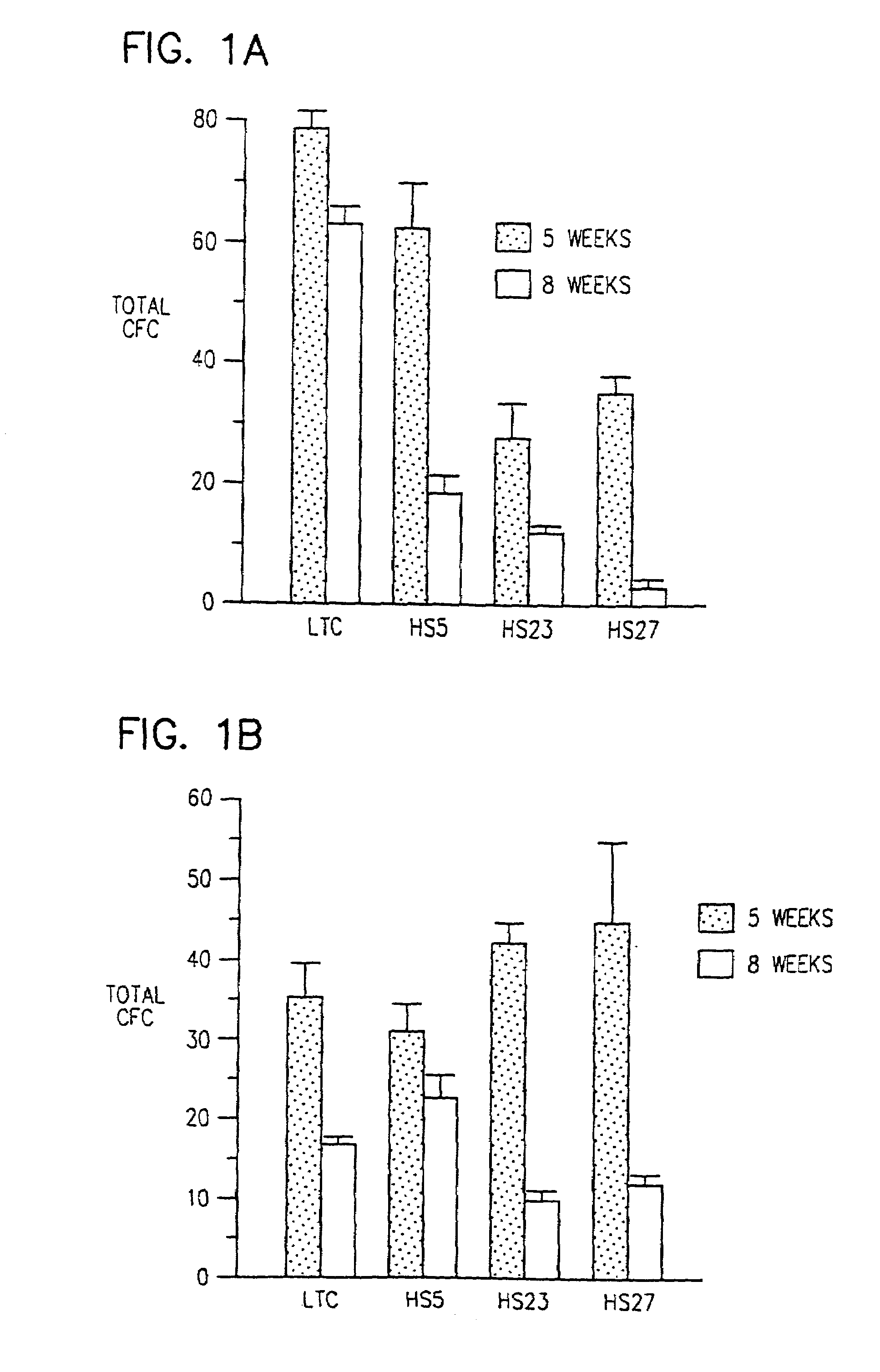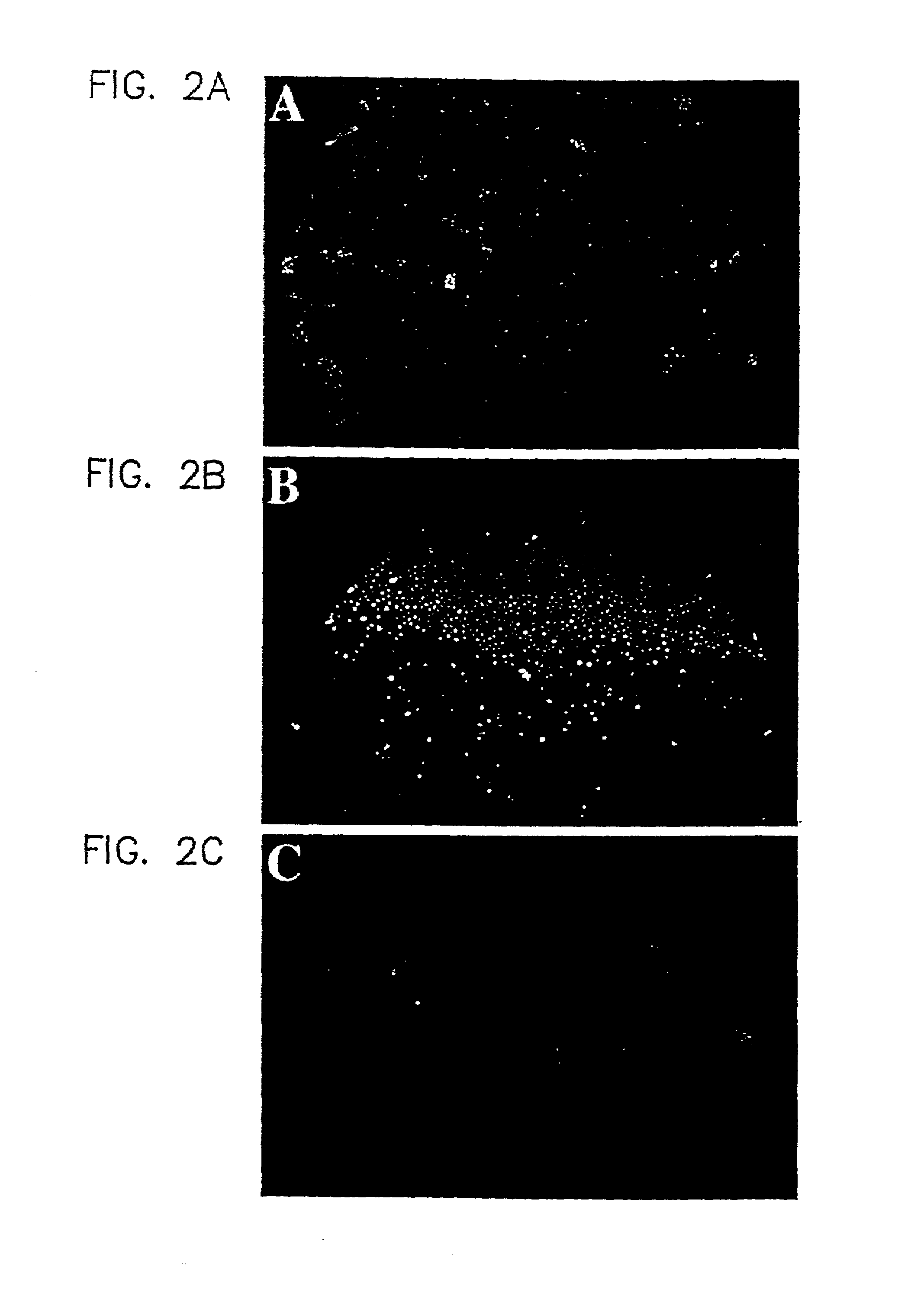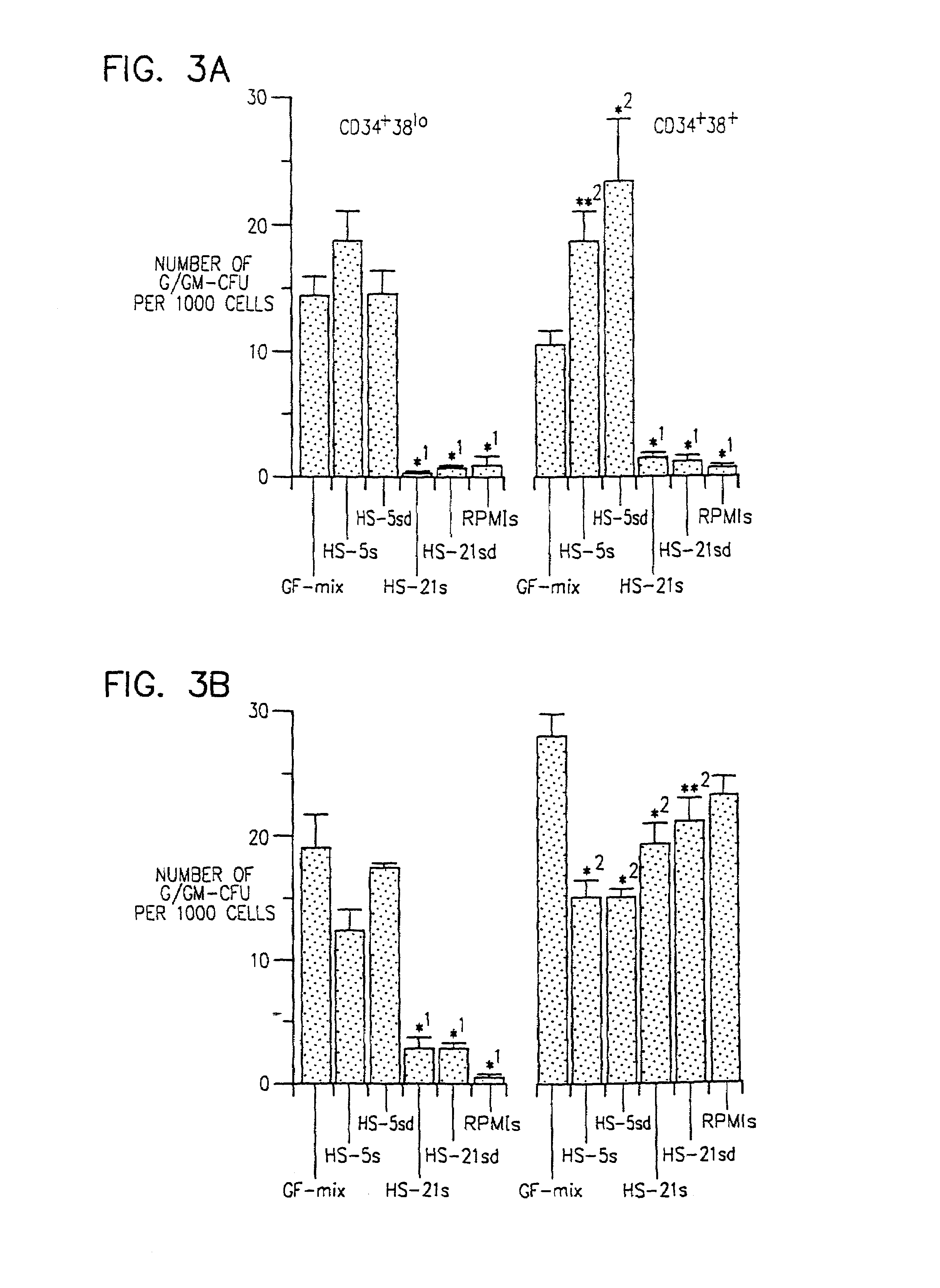Human marrow stromal cell lines which sustain hematopoiesis
a stromal cell and human marrow technology, applied in the field of human marrow stromal cell lines which sustain hematopoiesis, can solve the problems of complex stro-1 initiated cultures and primary ltcs, inability to identify contributions from individual cell types, and inability to execute development programs of stem cells and progenitor cells
- Summary
- Abstract
- Description
- Claims
- Application Information
AI Technical Summary
Problems solved by technology
Method used
Image
Examples
example i
Production of Human Stromal Cell Lines
[0046]This Example describes the production and characterization of HPV 16 E6 / E7 immortalized human marrow stromal cell clones. In subsequent Examples the stromal cell clones are shown to support the proliferation of hematopoietic progenitors and maintain colony forming cells (CFC) for up to 8 weeks in culture.
[0047]Adult bone marrow was obtained from normal donors and LTMC (long term marrow cultures) were established as described by Gartner and Kaplan, Blood 56:117 (1980). Briefly, buffy coat cells from marrow aspirates were plated in plastic tissue culture dishes at 1–2×106 cells per ml. Adherent cells were grown in Long term culture (LTC) medium containing Iscoves, 12.5% horse serum, 12.5% fetal calf serum, L-glutamine (0.4 mg / mL), sodium pyruvate (1 mM), penicillin (100 U / mL), streptomycin sulfate (100 μg / mL), hydrocortisone sodium succinate (10−6 M) and β-mercaptoethanol (10−4M).
[0048]For immortalization of bone marrow cells lines, the LTMC...
example 2
Stromal Lines Support Short and Long Term Hematopoiesis
[0063]A rapid screening assay was developed to demonstrate the viability and expansion of hematopoietic cells when co-cultured with the cell lines.
[0064]To isolate CD34+ / 38+ and 38lo cells, adult marrow was obtained from cadaveric donors. The mononuclear cells were isolated by Ficoll density centrifugation and RBCs removed by hemolysis with 150 Mm NH4Cl2 at 37° C. Marrow mononuclear cells were stored frozen in RPMI, 36% FCS, 10% DMSO, 90 U Penicillin, 90 mg / ml streptomycin sulfate, and 0.36 mg / ml glutamine. The stored cells were thawed at 37° C. and slowly diluted on ice to a final DMSO concentration below 1%. After washing, the CD34+ cells were labeled with anti-CD34 conjugated to fluorescein isothiocyanate (FITC) (HPCA-2 (IgG1) Becton-Dickinson, San Jose Calif.) for 20 minutes on ice, washed with PBS containing 1% BSA and then labeled with rat anti-mouse. IgG1 conjugated to superparamagnetic microbeads (Miltenyi Biotec GmbH, B...
example 3
Conditioned Medium Induces Hematopoiesis
[0070]Medium was conditioned by exposure to semi-confluent cultures of the immortalized human stromal cell lines for one week. Both RPMI containing 10% FCS and serum deprived (1% nutridoma-HU Boehringer Mannheim) media were used. The culture debris was pelleted by centrifugation at 2000×g for 10 minutes and the supernatant was then aliquoted and frozen at −20° C. Conditioned media was thawed only once prior to use. Concentrated conditioned medium was made using Amicon centriprep 10 concentrator (Amicon, Beverly, Mass.) according to the manufacturers specifications and protein content was determined using the BIO-RAD protein assay (Bio-Rad). Conditioned medium was assayed for colony stimulating activity in standard CFU assays and for cytokine content with ELISAs using Quantikine kits (R & D Systems, Minneapolis, Minn.) according to manufacturer's specifications. Supernatants were analyzed neat, at 1:2 and at 1:5 dilutions.
[0071]The results show...
PUM
| Property | Measurement | Unit |
|---|---|---|
| time | aaaaa | aaaaa |
| time | aaaaa | aaaaa |
| time | aaaaa | aaaaa |
Abstract
Description
Claims
Application Information
 Login to View More
Login to View More - R&D
- Intellectual Property
- Life Sciences
- Materials
- Tech Scout
- Unparalleled Data Quality
- Higher Quality Content
- 60% Fewer Hallucinations
Browse by: Latest US Patents, China's latest patents, Technical Efficacy Thesaurus, Application Domain, Technology Topic, Popular Technical Reports.
© 2025 PatSnap. All rights reserved.Legal|Privacy policy|Modern Slavery Act Transparency Statement|Sitemap|About US| Contact US: help@patsnap.com



